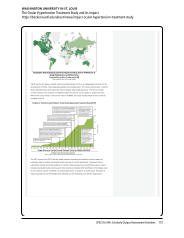40 · Survey Results: Survey Questions and Responses
The librarians in the system who know a lot about scholarly assessment are mostly self-taught.
The majority is self-directed; librarians acquire skills as needed to perform their work.
This is considered to be a requisite skill that needs to be addressed.
This is what liaison librarians do to support our learning, teaching, and research mission for the library and campus...
nothing new.
We are in the process of developing a training and outreach program in this topic area.
We don’t promote this as a “service” like circulation or reserves or instruction sessions. So it’s done as needed,
when requested.
We have the potential to develop collaborative goals between our Academic Liaison Program and Scholarly
Communications Task Group. We are also interested in considering research data as another element in the scholarly
output landscape.
We walk a careful line between educating researchers and not stepping on any possible conflicting issues with
promotion & tenure philosophies related to new scholarship measures.
Workshops for faculty were offered in Fall 2014, but were very poorly attended, so alternate approaches are currently
being evaluated.
SCHOLARLY OUTPUT ASSESSMENT STAFFING
(Note: This section does not pertain to library staff responsible for assessment of library-based activities.)
15. Which of the following statements describes the library staffing model for scholarly output
assessment services and training at your library? Check all that apply. N=67
Staffing Model Services Training N
Provided by several full-time library staff 52 41 55
Provided by designated specialist(s) 26 27 31
Provided by others who work part time 5 5 5
16. Please indicate how many library staff have responsibility for scholarly output assessment activities
and the total FTE these individuals represent (i.e., are they full-time or part-time). N=53
Library Staff N Minimum Maximum Mean Median Std Dev
Individuals 53 1.00 56 12.59 10.00 12.27
FTE 53 0.10 56 7.81 2.00 11.56




























































































































































































